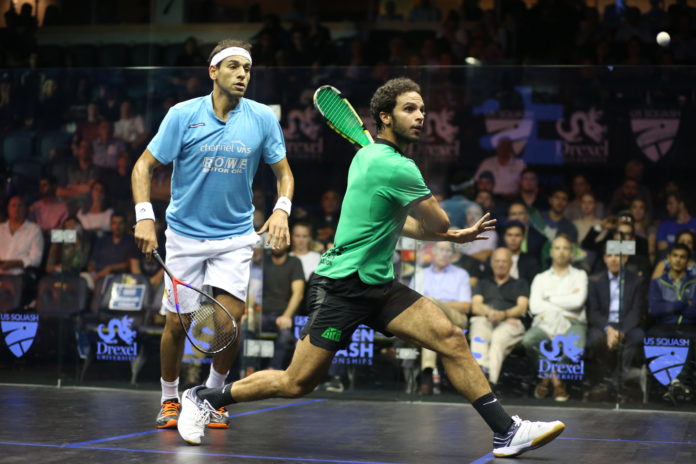By Richard Millman
Time is the real commodity. It’s the stocks and shares, the dollars and cents. Time is invisible and almost intangible. It ain’t juicy or blue or high or hard. And yet it is extremely quantifiable if you know how to look at it and use it. Managing time is one of the most crucial elements of squash—and one of the least understood.
The essential equation of squash is a time equation. X (how long you take to get in position and ready for your opponent’s next shot) must be less than Y (how long the ball takes to travel from your racquet before it is intercepted by your opponent).
X<Y. That’s it.
People don’t know the equation. People learn hitting before they learn movement. They are shot-centric. This mindset destroys the continuous flow of squash. People think that the game is about how well you strike the ball, which it isn’t. Hitting the ball is just a tool with which to manage improvement of your strategic position—where you are by the time the other person hits the ball.
Other contributing factors:
- You hit the ball too fast for yourself to gain strategic position.
- You are physically impaired or just not fit enough.
- You have underestimated your opponent’s speed.
- You are a shot-centric person and take a vacation after every shot you play because you drop your focus having completed the task of hitting a shot.
- You pause because you expect your shot to go to where you intended it—and it didn’t because the opponent was there sooner.
- You move like a human being instead of a squash player. You lean in the direction in which you are moving rather than towards the ball.
The key is airtime. That’s the time the ball spends in the air between being hit. Your opponent boasts. How do you behave? If you’re a beginner, you may start running toward the corner that you think the ball is going to. This is a disaster. If you start running before you have prepared your racquet, you are going to arrive in the corner with no planned or prepared stroke, too close to the ball, with no time left and no consideration at all of how to fashion a movement to put you in an ideal strategic position for what comes after whatever shot you end up playing.
When your opponent hits their boast, you need to simultaneously prep your racquet and turn in your own footsteps, without traveling, at a rhythmic rate that is faster than the ball covers the distance to the front wall. Before you start traveling you need to take a moment to get your plan together. This action instantly loads a menu of possible shots, the correct angle of approach and distance to the ball, an appreciation of where your opponent is and a blueprint of the court into your subconscious mind. It leaves you a beautiful margin of available time to execute whichever selections your automatic processing determines is the best choice.





